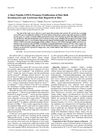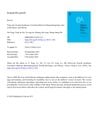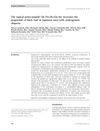Search
forLearn
2 / 2 resultslearn Osteopontin
signaling protein that, when suppressed, may grow hair by reducing inflammation and stem cell loss
Research
5 / 1000+ results
research A Short Peptide GPIGS Promotes Proliferation of Hair Bulb Keratinocytes and Accelerates Hair Regrowth in Mice
The peptide GPIGS helps hair cells grow and speeds up hair regrowth in mice.

research Polycystic Ovarian Syndrome: Correlation Between Hyperandrogenism, Insulin Resistance, and Obesity
High levels of male hormones, insulin resistance, and obesity are closely linked and worsen polycystic ovary syndrome, but more research is needed to improve treatments.

research The Topical Penta-Peptide Gly-Pro-Ile-Gly-Ser Increases the Proportion of Thick Hair in Japanese Men with Androgenetic Alopecia
GPIGS peptide increases thick hair growth in balding Japanese men.

research Nitric Oxide: Physiological Functions, Delivery, and Biomedical Applications
Nitric Oxide has potential in medicine, especially for infections and heart treatments, but its short life and delivery challenges limit its use.
research A Review of the Evidence for and Against a Role for Mast Cells in Cutaneous Scarring and Fibrosis
Mast cells likely promote skin scarring and fibrosis, but their exact role is still unclear.
Community Join
5 / 29 resultscommunity New Research- Creatine Increasing Scalp DHT Without Corresponding Serum DHT Increase
Creatine may increase scalp DHT without affecting serum DHT, potentially speeding up male pattern baldness (MPB) for those genetically prone. Treatments mentioned include Minoxidil, finasteride, and RU58841.
community Does melatonin dissolve in isopropyl alcohol
The conversation discusses making a topical melatonin solution for hair loss treatment, questioning if isopropyl alcohol can dissolve melatonin. Melatonin is soluble in lipids and alcohol, but it's unstable and should be mixed fresh regularly; it may help hair growth by affecting certain cellular signaling pathways and has anti-androgenic effects.

community Compressed part of research of theory of androgenic/anabolitic balance. AGA h-responders analytic. Theory of physio-metabolitic method of anti AGA treatment
The treatment for androgenetic alopecia involves using finasteride and minoxidil with intense exercise and cold exposure to boost metabolism and reduce androgenic effects, potentially leading to hair regrowth. This approach may activate biological pathways for improved hair and overall health.
community The Real Cause Of Androgenetic Alopecia
Androgenetic alopecia is caused by DHT affecting hair growth. Finasteride and minoxidil are used to manage hair loss by blocking DHT and promoting hair growth.
community 25M 9 months on Finasteride results
A 25-year-old experienced hair regrowth and reduced shedding after 9 months on finasteride, with inconsistent minoxidil use. Users discussed hairline changes, shedding phases, and the effectiveness of finasteride, with some mentioning side effects and other treatments like rosemary oil.